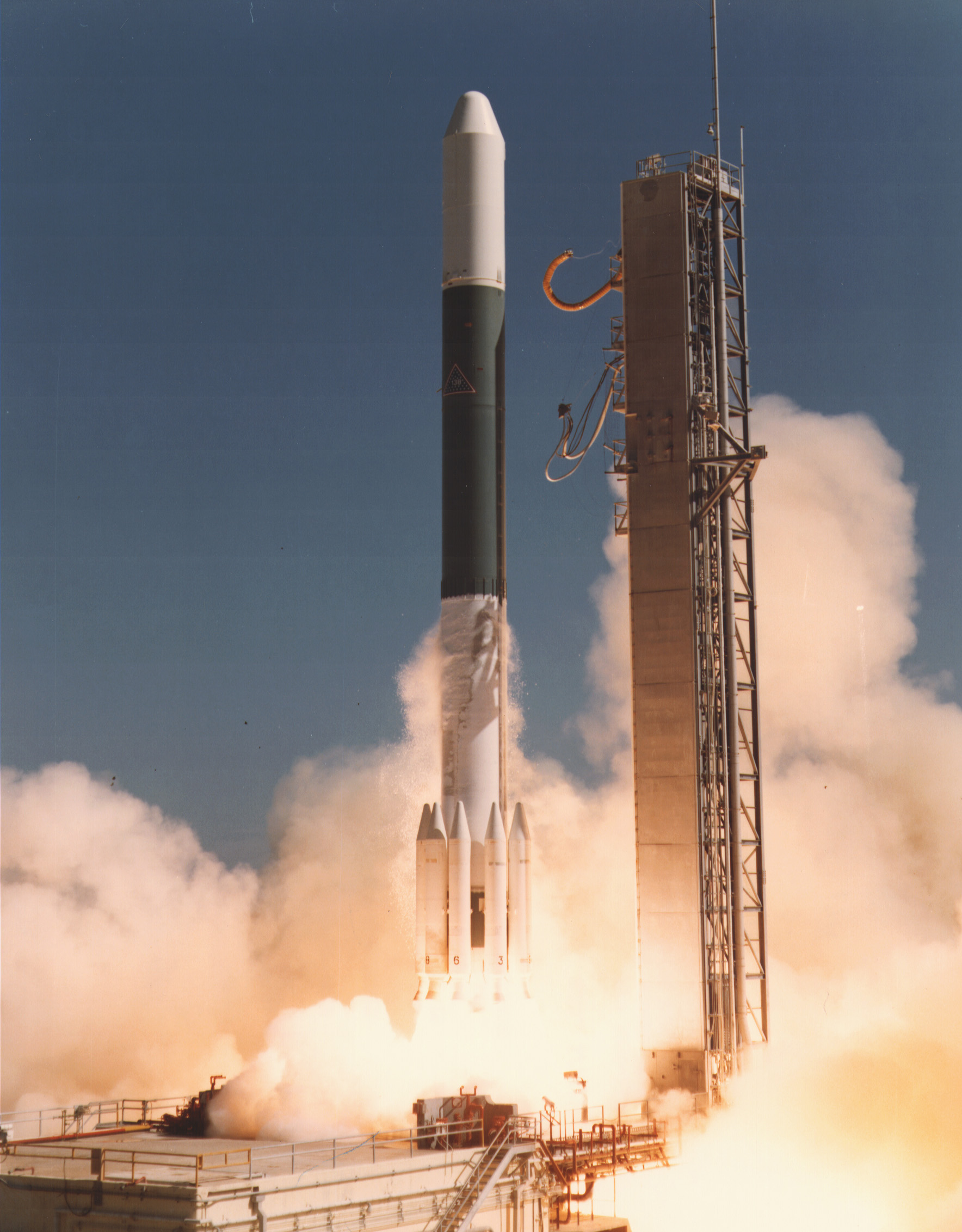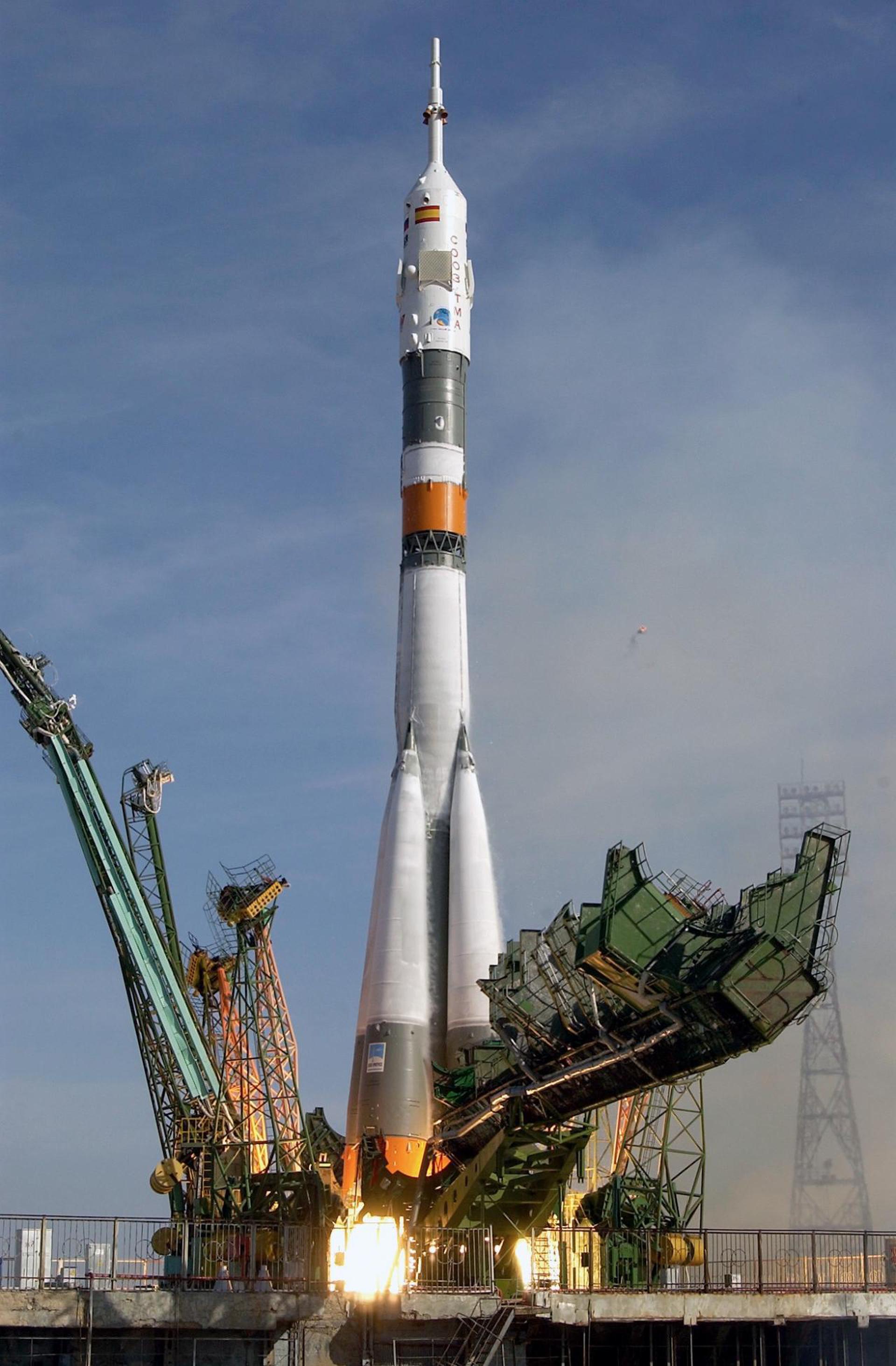Previous Spaceflight Launches
Filter by Agency, Locations or Vehicles
Show All LaunchesVostok 8A92M | Meteor-1 26 (35L)
RKK Energiya | RussiaPlesetsk Cosmodrome, Russian Federation
Oct. 15, 1976, 10:59 p.m.
Delta 2914 | Marisat 3
McDonnell Douglas | United States of AmericaCape Canaveral SFS, FL, USA
Oct. 14, 1976, 10:44 p.m.
Soyuz | Soyuz 23
Russian Federal Space Agency (ROSCOSMOS) | RussiaBaikonur Cosmodrome, Republic of Kazakhstan
Oct. 14, 1976, 5:39 p.m.
Status: Launch Successful
Mission:
Soyuz 23 was meant to be the second crewed flight to the Salyut 5 military space station. The mission began on October 14, 1976, 17:39:18 UTC, launching Commander Vyacheslav Zudov and Flight Engineer Valery Rozhdestvensky into orbit. They arrived at the station, but equipment malfunction did not allow docking and the mission had to be aborted Soyuz 23 returned to Earth on October 16, 1976, 17:45:53 UTC, with an unintended splashdown in partially frozen Lake Tengiz. The capsule sunk, and due to fog and other adverse conditions it took nine hours for the rescue team to recover the capsule and crew.
Low Earth OrbitSoyuz U | Zenit-4MK 68
Russian Federal Space Agency (ROSCOSMOS) | RussiaBaikonur Cosmodrome, Republic of Kazakhstan
Oct. 10, 1976, 9:35 a.m.
Soyuz U | Zenit-4MKT 3
Russian Federal Space Agency (ROSCOSMOS) | RussiaPlesetsk Cosmodrome, Russian Federation
Oct. 4, 1976, 11 a.m.
Kosmos-3M | Strela-2M 14
Russian Space Forces | RussiaPlesetsk Cosmodrome, Russian Federation
Sept. 29, 1976, 7:04 a.m.
Soyuz U | Zenit-4MK 67
Russian Federal Space Agency (ROSCOSMOS) | RussiaPlesetsk Cosmodrome, Russian Federation
Sept. 24, 1976, 3 p.m.
Soyuz U | Zenit-2M 71
Russian Federal Space Agency (ROSCOSMOS) | RussiaBaikonur Cosmodrome, Republic of Kazakhstan
Sept. 22, 1976, 9:30 a.m.
Soyuz U | Zenit-4MT 11
Russian Federal Space Agency (ROSCOSMOS) | RussiaPlesetsk Cosmodrome, Russian Federation
Sept. 21, 1976, 11:40 a.m.
Titan 24B | KH-8 47
Lockheed Martin | United States of AmericaVandenberg SFB, CA, USA
Sept. 15, 1976, 6:50 p.m.






